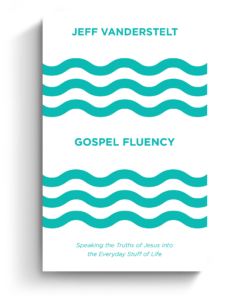In December 2015, the Star Wars franchise hit theaters after a 10-year sabbatical. The revival of the series was met with record-breaking ticket sales and enthusiastic critical praise. But a significant number of viewers were displeased. Was The Force Awakens merely a clone of the original 1977 film Star Wars (now Episode IV: A New Hope)?
The similarities were unmissable: the destruction of a massive spherical weapon through the exploitation of a weak point vulnerable only to X-wings—this time the planet Starkiller Base instead of the moon-sized Death Star; the presence of cute droids who provide whimsical comic relief—this time BB-8 instead of R2-D2; and so forth. Even many of the shots felt like replicas, as demonstrated in this side-by-side video comparison.
But is this a problem?
Rhyming Poetry Stanzas of ‘Star Wars’
Star Wars creator George Lucas intended for the series to contain repetition. When he released The Phantom Menace in 1999 after 16-year gap since 1983’s The Return of the Jedi, he intentionally included elements that would remind viewers of the original trilogy.
“It’s like poetry. They rhyme. Every stanza rhymes with the last one,” Lucas said, referring to Anakin Skywalker destroying the droid control ship as a “rhyme” with Luke’s destruction of the Death Star.
With The Force Awakens, director J. J. Abrams and writers Michael Arndt and Lawrence Kasden (writer of The Empire Strikes Back and The Return of the Jedi) fully intended to write a new stanza in the same epic poem. Rather than lazily recycling ideas, the writers crafted a tale that would introduce new characters, integrate old ones, and continue the saga by creating a new stanza.
New stanzas in a poem build on what has come before, but they also introduce new language. While Starkiller Base intentionally reminds viewers of the Death Star, it is also something new. While capable of destroying whole systems rather than single planets, its most important new element is that it drains the life of a sun for its power. The symbolism of light and dark is not new to the Star Wars universe, but this is a new twist. Starkiller drains light. It drains hope. It drains life. It brings darkness and death. It is new, but also familiar.
Why would the writers not want to come up with something entirely new and original?
Because Star Wars is a unified, still-unfolding story. The writers are communicating important meaning, themes, and symbolism by repeating the same universal ideas that have compelled fans to follow this franchise for 40 years.
Good Stories and the Best Story
The Star Wars world is one we understand: good versus evil; light breaking through darkness; political turmoil and warfare that wrecks lives; underdogs challenging indestructible powers; the desire for domination facing off against those who would sacrifice themselves for the good of others.
These stories are timeless. But humans are forgetful. We must be taught the most important lessons multiple times. That’s why the rhythm of repetition is essential.
In his essay “On Fairy Stories,” J. R. R. Tolkien argued that all good stories contain elements and truths of the best story, the gospel.
All good stories are good stories because they contain elements and truths of the best story, the gospel.
George Lucas never set out to present the gospel, but the reality is every great storyteller tells this “best story” to some extent. The story of selfless love, of sacrifice, of good conquering evil, is the story that runs throughout the Scriptures—and throughout the literary canon. There is something embedded in our nature that draws us to these kinds of stories and these kinds of characters.
Like a poet repeating a refrain, the Star Wars films constantly revisit the major points of the franchise. When we begin to see this kind of repetition as beautiful and intentional rather than boring or lazy, we can begin to appreciate a new layer of artistry in the series.
Ultimately, what we love most about Star Wars—the powerfully relatable characters, the creativity of the universe, the heroes, the conflict—are all things we love because there is something truer about them than even Lucas realized. They remind us of our own world, our own Creator, and the Greatest Story Ever Told.
Repetitious Faith
Christians need repetition. We must rehearse the gospel. We do this every week as we gather in worship. We do this in the repetition of the Lord’s Supper. We do this in the repetition of repenting and believing.
The Christian life is built upon repetition. And this is a beautiful thing.
Our age says newer is better, and thus we disdain repetition because it lacks that newness. But Christianity calls us to something ancient, something that has been practiced and repeated, Sunday after Sunday, day after day, decade after decade, for a very long time.
Though The Last Jedi has been praised as not just more of the same, if this or future Star Wars installments feel familiar or repetitive to us, is that such a bad thing? Maybe we should see the repetition for what it is: new stanzas that rhyme with the lines that came before, reinforcing and reminding us of eternal truths we are prone to forget.
“The Most Practical and Engaging Book on Christian Living Apart from the Bible”
 “If you’re going to read just one book on Christian living and how the gospel can be applied in your life, let this be your book.”—Elisa dos Santos, Amazon reviewer.
“If you’re going to read just one book on Christian living and how the gospel can be applied in your life, let this be your book.”—Elisa dos Santos, Amazon reviewer.
In this book, seasoned church planter Jeff Vanderstelt argues that you need to become “gospel fluent”—to think about your life through the truth of the gospel and rehearse it to yourself and others.
We’re delighted to offer the Gospel Fluency: Speaking the Truths of Jesus into the Everyday Stuff of Life ebook (Crossway) to you for FREE today. Click this link to get instant access to a resource that will help you apply the gospel more confidently to every area of your life.




























